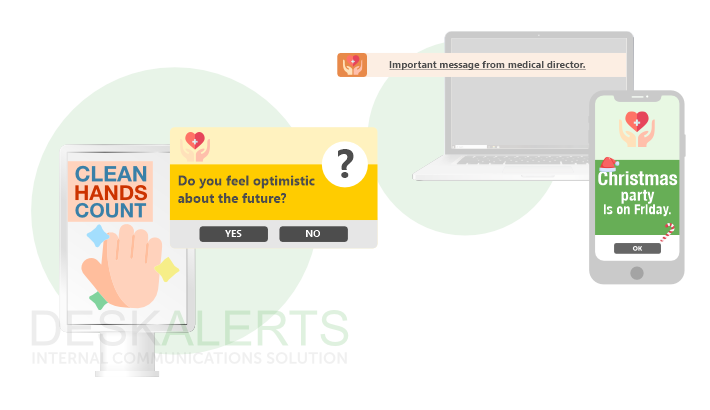
Burnout in healthcare is a pervasive and concerning phenomenon that affects a significant number of medical professionals, ranging from physicians and nurses to other healthcare workers.
This complex issue is characterized by emotional exhaustion, depersonalization, and a reduced sense of personal accomplishment. The link between nursing burnout and patient safety is a clear one - burnout doesn’t just affect the wellbeing of healthcare providers, it can impact the quality of patient care.
By identifying and understanding burnout, healthcare administrators can tailor and implement effective nurse burnout solutions to build resilience and overcome these challenges.
Table of Contents
What causes burnout in healthcare?
How to tell if your healthcare staff are experiencing burnout?
Putting strategies in place to counter burnout in healthcare
What causes burnout in healthcare?
There are a combination of individual and systemic factors that can lead to burnout in healthcare. The demanding nature of the healthcare profession coupled with unique organizational challenges, contributes significantly to burnout among medical professionals. Key causes include:
- Heavy workloads. Excessive work demands, long hours, and high patient loads can overwhelm healthcare workers, leading to emotional exhaustion.
- Administrative burdens. Cumbersome administrative tasks, such as paperwork and documentation requirements divert time and attention away from patient care, contributing to frustration.
- Staff shortages. Insufficient staffing levels amplify the workload for healthcare professionals, increasing stress and reducing the time available for rest and recuperation.
- Lack of resources. Inadequate resources, both in terms of personnel and equipment, hinder healthcare providers from delivering optimal care, leading to feelings of frustration and helplessness.
- Organizational culture. A workplace culture that fails to prioritize employee well-being, lacks support systems or fosters a sense of detachment can contribute to burnout.
- High-pressure decision making. The responsibility of making critical decisions in high-pressure situations, often with life-and-death implications, can lead to emotional strain and mental fatigue and is one of the best examples of nurses burnout and patient safety being linked.
- Limited autonomy. Healthcare providers may experience burnout when they perceive a lack of control or autonomy in their work, feeling constrained by rigid protocols and policies.
Addressing healthcare burnout requires a comprehensive approach that considers both individual resilience and systemic improvements within healthcare organizations.
See How Leading Hospitals Tackle Communication and Burnout
Burnout often stems from poor communication, chaotic workflows, and disconnection across teams. Discover how healthcare organizations are solving these problems.
Download our free guide: 8 Real-World Use Cases: How Healthcare Teams Communicate Faster and Safer with DeskAlerts.
- Improve shift coordination
- Streamline urgent communication
- Support staff with real-time alerts
- Reduce operational chaos that contributes to burnout

How to tell if your healthcare staff are experiencing burnout
Identifying burnout in healthcare workers is crucial to address the issue and ensure the well-being of both the employees and the quality of patient care.
Several signs and indicators can help in recognizing burnout. Being attuned to these signs allows healthcare organizations to proactively implement nurse burnout solutions and foster a healthier work environment for their staff.
- Emotional exhaustion. Pay attention to signs of emotional fatigue and depletion. Healthcare workers experiencing burnout may seem emotionally drained, detached and disengaged from their work.
- Depersonalization. Watch for changes in attitude towards patients and colleagues. Burnout can manifest as cynicism, a lack of empathy and a distancing from interpersonal connections.
- Physical symptoms. Be aware of physical manifestations such as headaches, fatigue, insomnia and changes in appetite. These can be indicators of the physiological toll of burnout.
- Increased errors. Burnout can impair cognitive function and decision-making, leading to an increase in medical errors and a decline in the quality of patient care.
- Isolation. If healthcare workers withdraw from social interactions, teamwork or professional activities, it may signal burnout-induced isolation.
- Resistance to change. Burnout can result in a resistance to organizational changes or a reluctance to adopt new practices, reflecting a sense of overwhelm and frustration.
Putting strategies in place to counter burnout in healthcare
Implementing effective burnout prevention programs is crucial for sustaining a resilient and motivated healthcare workforce. By fostering a supportive work environment, promoting mental health resources, and addressing systemic issues like staffing and workload, organizations can enhance the well-being of their healthcare professionals.
Ultimately, a workforce that is protected from burnout is better positioned to provide compassionate, high-quality care, creating a ripple effect that positively influences the entire healthcare system. Strategies on how to fix nurse burnout include:
1. Implementing flexible work schedules
Flexible work schedules in healthcare is one of the most powerful interventions to reduce nurse burnout. By giving healthcare professionals greater control over their time. This adaptability allows for improved work-life balance, reduced stress and enhanced overall well-being, fostering resilience and mitigating the emotional exhaustion often associated with the demanding nature of healthcare roles.
2. Provide mental health resources
Offering mental health resources equips healthcare workers with crucial support, addressing the emotional toll of their roles. Access to counseling, support groups, and confidential assistance helps mitigate burnout, enhancing emotional resilience and fostering a healthier, more supportive work environment for professionals dealing with the challenges of the healthcare sector.
3. Promote greater team collaboration
Encouraging staff to work together as a team is beneficial to nursing burnout prevention. When everyone in the team talks openly, helps each other out, and shares the workload, it makes things less stressful. Teamwork makes nurses feel like they're not alone, reducing stress and making everyone's work life better.
4. Offer stress management training
Implementing solutions to nurse burnout involves focused efforts on stress management training. Equipping nurses with practical techniques to handle stressors enhances their resilience, ensuring they navigate high-pressure situations with greater ease. Stress training is a key component in promoting nurse well-being, reducing burnout and sustaining a healthier work environment.
5. Show staff you recognize and appreciate them
In nursing burnout prevention, recognizing and acknowledging achievements plays a vital role. Regular acknowledgment of nurses' hard work fosters a sense of accomplishment and boosts morale. This positive reinforcement not only validates their efforts but also contributes to a supportive work environment, mitigating burnout and enhancing overall job satisfaction.
6. Provide professional development opportunities
Provide opportunities for skill development, career advancement, and ongoing education. Continuous learning can reignite passion and interest in the profession.
7. Address staffing issues
One of the simplest nursing burnout solutions is to ensure you have the right number of staff. Adequate staffing levels are crucial for preventing burnout. Ensure that there are enough personnel to handle the workload and consider temporary relief during periods of heightened stress.
8. Encourage regular breaks
Breaks provide essential moments of rest and rejuvenation, reducing stress and fatigue. This practice not only safeguards the well-being of healthcare professionals but also enhances their ability to deliver high-quality care, contributing to burnout prevention.
9. Establish clear communication channels
Establishing clear communication channels, including tools like DeskAlerts, is crucial for reducing burnout in healthcare. Open communication fosters transparency, ensuring that staff stay informed about critical updates and changes. This clarity minimizes uncertainty, enhances collaboration and plays a significant role in creating a supportive work environment.
Want to See Transparent Communication in Action?
You’ve just read how better communication reduces burnout. Now see how real hospitals are doing it with DeskAlerts.
Download our guide: 8 Real-World Use Cases: How Healthcare Teams Communicate Faster and Safer with DeskAlerts.
Get insights on how hospitals:
- Support frontline staff with instant alerts
- Coordinate better across departments
- Reduce stress and uncertainty during crises
- Improve internal transparency and safety


10. Regularly assess and adjust workloads
Evaluating and adjusting workloads ensures they remain manageable, preventing overwhelming stress. This proactive approach addresses the complexity of tasks, time constraints and overall demands on healthcare professionals, promoting a more sustainable and supportive work environment that guards against burnout.
11. Promote self-care practices
Encourage healthcare workers to prioritize self-care activities such as exercise, adequate sleep,and hobbies outside of work to enhance overall well-being.
12. Provide professional support services
Offer access to professional support services, such as career counseling and mentoring programs to help healthcare workers navigate their career paths and challenges.
Implementing a combination of these strategies can contribute to a more resilient and supportive healthcare environment, reducing the risk of burnout among healthcare professionals.
***
Recognizing the signs of burnout, understanding its underlying causes, and implementing effective interventions to reduce nurse burnout are essential steps toward building a more sustainable and compassionate healthcare system. The well-being of healthcare professionals is intricately linked to the quality of patient care, making the prevention and management of burnout a critical priority for the entire healthcare community.
FAQ
How does burnout affect patient care?
Burnout profoundly impacts patient care as healthcare professionals facing this chronic stress experience diminished well-being and job satisfaction. Emotional exhaustion, a hallmark of burnout, can lead to reduced empathy and impair the patient-provider relationship. Depersonalization may result in a detached attitude, negatively affecting the quality of interpersonal care. Nurses burnout also correlates with an increased likelihood of medical errors, compromising patient safety
How are hospitals preventing burnout?
You might wonder what are hospitals doing to prevent burnout? Hospitals employ various burnout prevention programs and strategies. These include implementing flexible work schedules to enhance work-life balance, offering accessible mental health resources like counseling services, fostering a collaborative team culture to reduce individual pressures, providing stress management training, recognizing achievements, establishing clear communication channels such as DeskAlerts and conducting regular workload assessments to manage stress and promote sustainability in the work environment.
These nursing burnout solutions collectively aim to address burnout and create a supportive atmosphere for healthcare staff, ultimately improving their well-being and the quality of patient care.
How does burnout affect nursing and quality of care?
Nursing burnout critically influences the quality of care. Emotional exhaustion can lead to a lack of energy for patient interactions, diminishing the patient experience. Depersonalization may cause nurses to withdraw, impacting the quality of relationships and communication. A reduced sense of accomplishment might affect the motivation to provide thorough care. As burnout intensifies, the risk of medical errors and compromised patient safety rises.
What is the association between job related burnout and patient safety among hospital based healthcare workers?
The association between nursing burnout and patient safety is significant. Burnout increases the likelihood of medical errors and compromises patient safety.
Exhausted and disengaged healthcare workers are more prone to lapses in attention and judgment, impacting the quality of care delivered. Recognizing this link emphasizes the urgency of addressing burnout to safeguard both the well-being of healthcare professionals and the safety of patients within hospital settings.
 Caroline Duncan
Caroline Duncan









